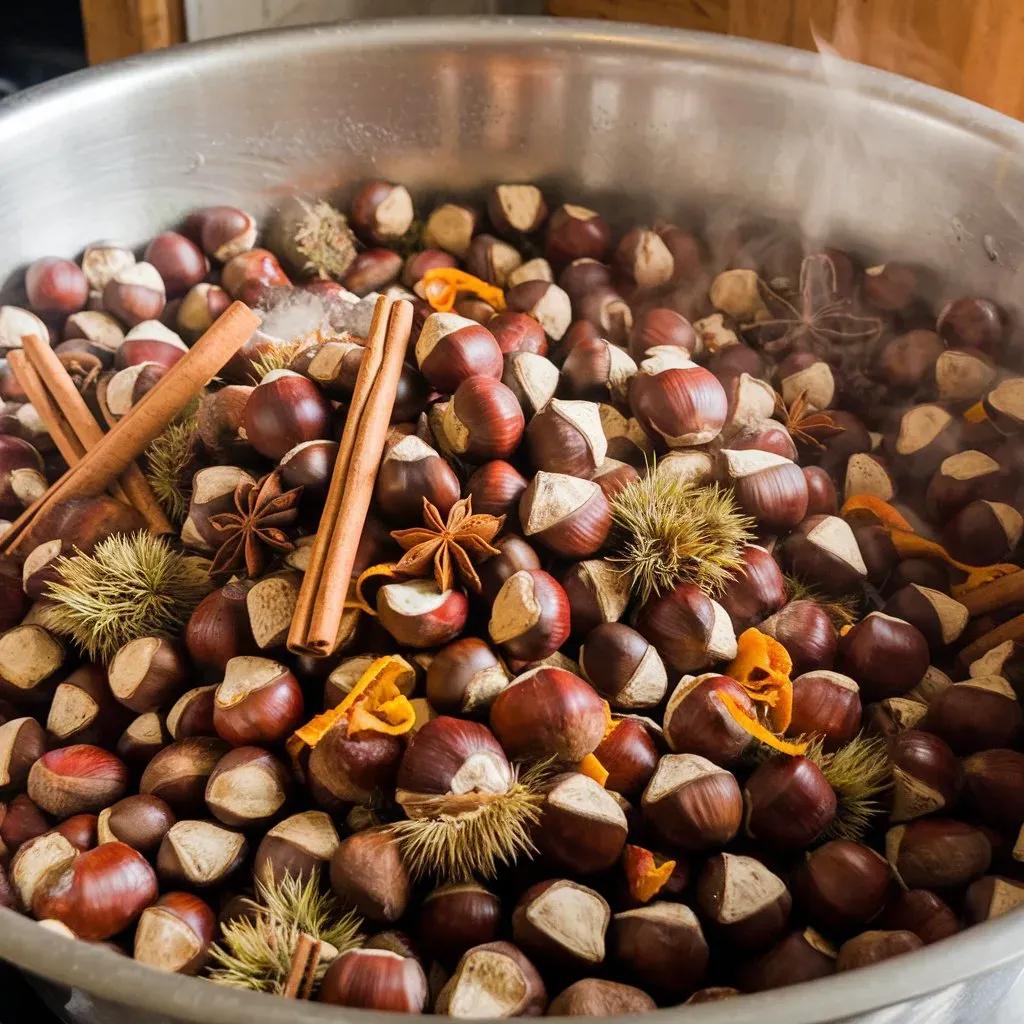The Historical Significance of Chestnuts
Chestnuts have a rich history that dates back thousands of years. They were a staple food for ancient civilizations, providing sustenance during harsh winters. The Greeks and Romans cultivated chestnut trees, recognizing their value as both a food source and a symbol of fertility and abundance. In medieval Europe, chestnuts were often referred to as "the bread of the poor" due to their role as a dietary staple.
Nutritional Powerhouse: The Health Benefits of Chestnuts
Chestnuts are not only delicious but also packed with nutrients. Unlike other nuts, chestnuts are low in fat and calories, making them a healthy snack option. They are rich in complex carbohydrates, providing a steady source of energy. Additionally, chestnuts are a good source of vitamins C, B6, and minerals such as potassium and magnesium.
Nutritional Profile of Chestnuts (per 100g)
| Nutrient | Amount |
|---|---|
| Calories | 131 kcal |
| Protein | 2.4 g |
| Fat | 1.1 g |
| Carbohydrates | 28.3 g |
| Fiber | 8.1 g |
| Vitamin C | 24.7 mg (41% DV) |
| Vitamin B6 | 0.376 mg (29% DV) |
| Potassium | 518 mg (15% DV) |
Chestnuts in the Kitchen: Culinary Uses and Recipes
Chestnuts are incredibly versatile and can be used in a variety of dishes. From savory to sweet, their slightly sweet and nutty flavor enhances many recipes. Here are some popular culinary uses:
Roasted Chestnuts
Roasting chestnuts is a timeless tradition. The process enhances their natural sweetness and adds a smoky flavor. To roast chestnuts, simply make a small cut in each nut, place them on a baking tray, and roast in the oven until they are tender.
Chestnut Soups and Stews
Chestnuts add a rich, earthy flavor to soups and stews. They pair well with root vegetables, mushrooms, and poultry, creating hearty and comforting dishes perfect for cold weather.
Chestnut Desserts
Chestnuts are a popular ingredient in desserts, particularly during the holiday season. Chestnut puree can be used in cakes, pastries, and even ice cream, providing a unique flavor profile.
Growing and Harvesting Chestnuts
Chestnut trees are cultivated in many parts of the world, including Europe, Asia, and North America. They thrive in temperate climates and are typically harvested in the fall. Harvesting chestnuts requires careful attention, as the nuts are encased in a spiky husk that must be removed.
Types of Chestnuts
There are several types of chestnuts, each with its own unique characteristics. The European chestnut (Castanea sativa) is the most common, known for its large, sweet nuts. The American chestnut (Castanea dentata) was once abundant in North America but was devastated by blight in the early 20th century. Efforts are underway to restore this iconic tree.
Chestnuts in Culture and Tradition
Chestnuts hold a special place in various cultures around the world. In Japan, chestnuts are a symbol of strength and are often included in New Year's celebrations. In Italy, chestnut festivals, known as "sagre delle castagne," celebrate the harvest with music, food, and festivities.
Chestnuts in Literature and Art
Chestnuts have also made their mark in literature and art. They are often mentioned in poetry and songs, symbolizing warmth and nostalgia. In art, chestnut trees are depicted as symbols of endurance and beauty.
Sustainable and Ethical Considerations
As we become more conscious of our environmental impact, it's important to consider the sustainability of the foods we consume. Chestnut trees are valuable for their ability to prevent soil erosion and support biodiversity. Additionally, choosing chestnuts from responsible sources ensures that we are supporting ethical farming practices.
Conclusion
Chestnuts are more than just a seasonal treat; they are a testament to nature's bounty and a reminder of the rich history and culture that surrounds them. Whether enjoyed roasted by an open fire, blended into a creamy soup, or baked into a decadent dessert, chestnuts offer a taste of tradition and a glimpse into the culinary heritage of many cultures.
As you explore the world of chestnuts, remember to savor each bite and appreciate the journey from tree to table. The humble chestnut, with its unique flavor and storied past, continues to captivate and delight, making it a cherished addition to any kitchen.


